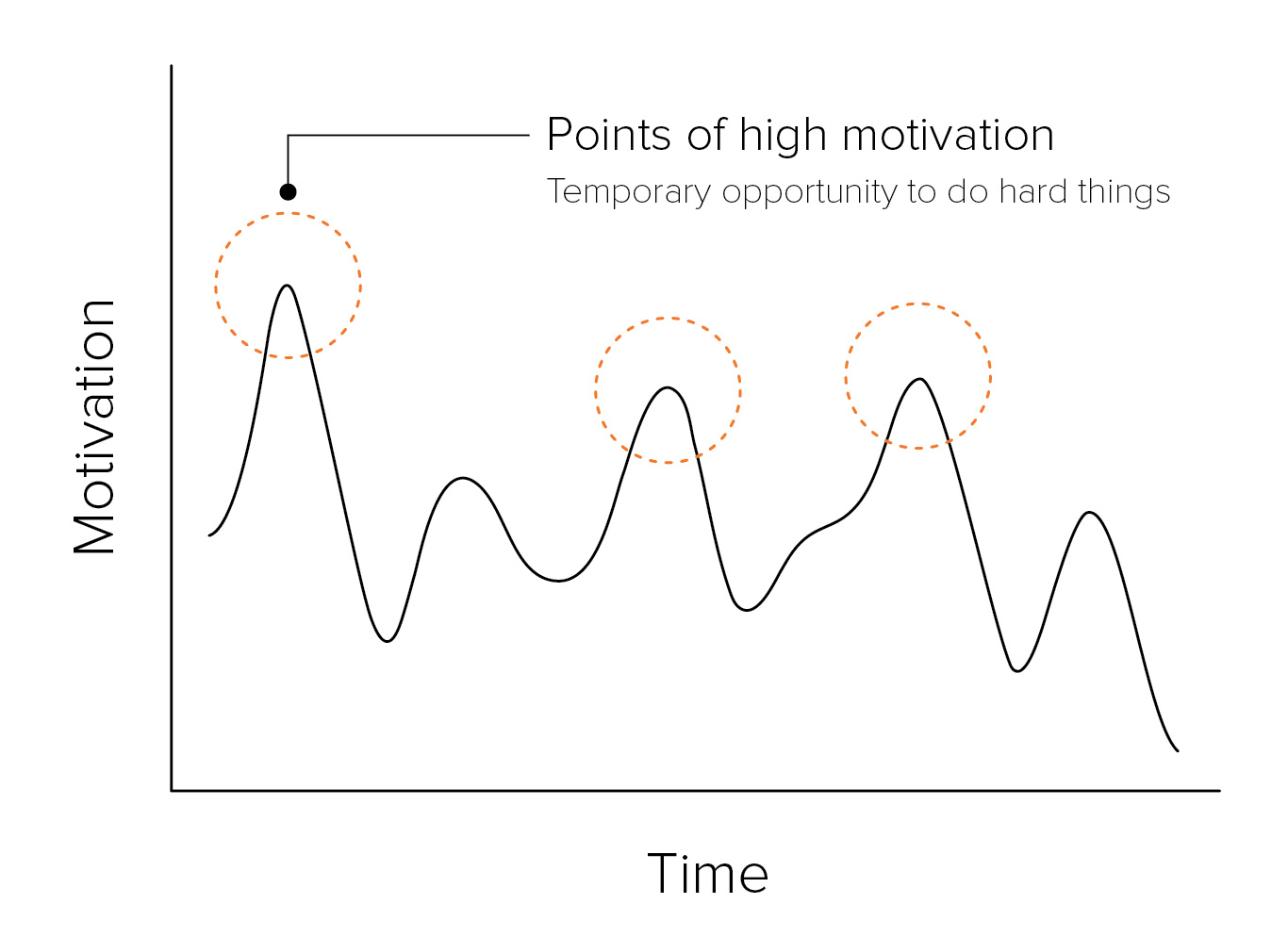According to Abraham Maslow, once basic needs such as food, water, and safety are satisfied, humans are naturally motivated to embark on an ongoing quest to reach our full potential. So is it really the problem of lack of motivation? Or are we just having trouble following through? Often the problem is our misguided concept of motivation itself. Here are five ways to think about motivation differently.
You’re motivated but resources are limited
If you’re thinking seriously about making a behavioral change, lack of motivation isn’t the reason you’re stuck in “trying to get traction” mode. According to social scientist BJ Fogg, the problem is more likely related to a lack of “ability.” No, Fogg is not suggesting you’re incapable of change. His theory is that we all experience, to varying degrees, scarcity in resources such as time, money, and skills, and that scarcity can interfere with our ability to accomplish even what we are plenty motivated to achieve. According to Fogg’s behavior model, you have two options: You can try to get more of the resource you’re lacking (easier said than done) or you can scale down the behavior to match the resource you do have (more practical). Want to start meditating but can’t find the 30 minutes to spare? Start with 5 minutes. Want to get fit but have no idea where to start? Hire a coach to set you up with a 10-minute workout plan.
Motivation isn’t constant
Motivation waxes and wanes. Be ready with options. In the throes of inspiration, we often set ambitious schedules that seem entirely doable to our highly motivated selves. I’m going to take four yoga classes a week! Starting today, I’m going to take three deep breaths every time I get mad at my kids! But the minute we fail to meet these high expectations, we throw in the towel. Eh, I don’t feel like yoga today, so forget yoga. What we forget is that motivation isn’t constant. Sometime you’re just not feeling it, so it’s important to build in daily options to harness your “motivation wave,” the daily or even hourly fluctuations in motivation that Dr. Fogg describes.
BJ Fogg’s Motivation Wave The idea is to take a more challenging path when you are feeling inspired and an easier route when motivation is waning. Let’s say your goal is to write a page in your journal every night before bed. You get home late from an event one night and just want to roll into bed — your motivation wave is hitting bottom. Instead of blowing off your new habit completely, make it easier for yourself and just write down one sentence or one thing you’re grateful for.
External rewards and fear can motivate. But only temporarily
Have you ever had a flash of motivation upon learning a sobering new fact? Maybe you read that excessive sitting can lead to diabetes, so you suddenly bolt out of your chair every hour. Or your company launches a “biggest loser” competition with cool prizes, so you start skipping meals in an attempt to drop 10 pounds fast. Your mission succeeds — for a few days. Fact is, change inspired by fear or external rewards never lasts. Of course it’s inspiring to learn new facts or be tempted with a prize. But rather than dwell on the risks of doing the wrong thing, relish the positive experience of doing something new and positive. If you don’t have an intrinsically motivating reason for taking on a new habit you won’t keep it a part of your daily routine for long.
Identifying your “why” is motivating
When the going gets rough — when your good intentions go up against your ingrained behavioral patterns — knowing and remembering what’s really driving you (your “why”) may be all that keeps you on course. The technique therapists and coaches use to to get at this is called “motivational interviewing,” and it’s something you can borrow and use on yourself. Essentially, you keep asking “why” until the answer gets real. Here’s a conversation you might have with yourself: “Why do I want to start exercising?” “Because I want more energy” “OK, why do I want more energy?” “Because I feel tired all the time.” “Why don’t I want to feel tired?” “Because when my kids ask me to play tag, I want to feel like doing it.” “Why does that matter to me so much?” “Because I don’t want to let my kids down and limit the activities we can do together. I’m want to be a good role model for them.” The fourth or fifth reason you articulate for wanting to change will be far less superficial than the first. Once you’ve nailed down the real reason, write it down and put it somewhere handy — you’ll need it, and it might also help you identify more ways to fulfil your deepest desire.
A growth mindset will keep you trying when you hit obstacles.
We’re all capable of improving, regardless of what natural abilities we were born with or without. It’s important then to acknowledge our successes or failures and remind ourselves that they are a direct result of our own effort or lack thereof, not of factors outside our control. It’s the difference between having a “fixed mindset” or a “growth mindset”. A “fixed mindset” assumes that our abilities can’t be changed in any meaningful way, and success or failure is the reinforcement of the traits we were “born” with. When we have a “growth mindset,” on the other hand, we see obstacles and challenges as opportunities for growth beyond our existing abilities. These two mindsets spur a great deal of our behavior so it’s essential to recognize if you tend toward a fixed mindset and try to shift your thinking toward a growth mindset.
